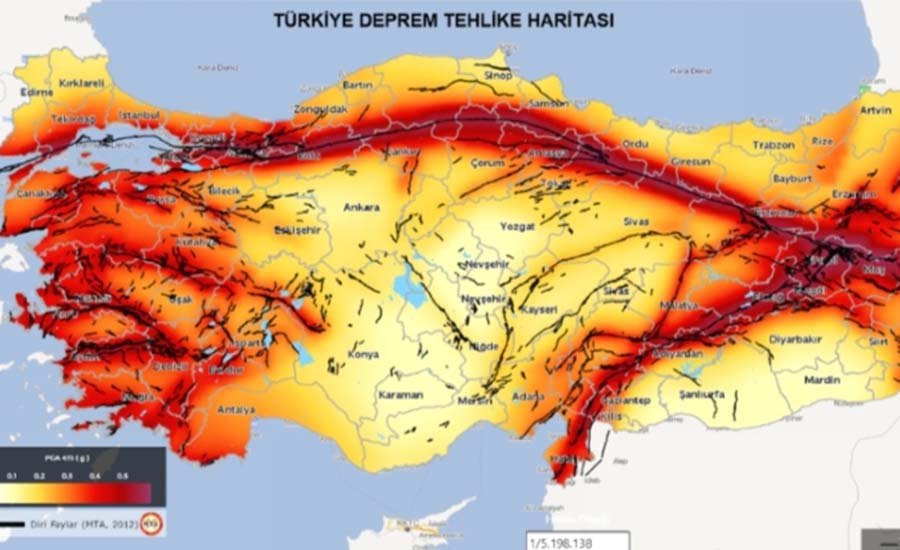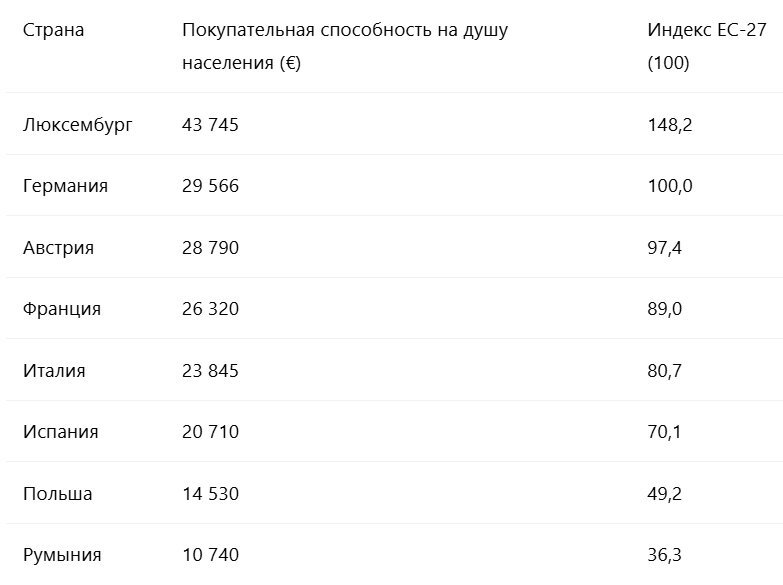читайте также
 Hotels in Vietnam: weak service and climate risks
Hotels in Vietnam: weak service and climate risks
 New housing rental rules in Greece
New housing rental rules in Greece
 Turkey at the Epicenter of Seismic Risk: 100 Earthquakes a Day
Turkey at the Epicenter of Seismic Risk: 100 Earthquakes a Day
 Global Wealth Map: The U.S. Maintains Leadership, Asia Strengthens Its Position
Global Wealth Map: The U.S. Maintains Leadership, Asia Strengthens Its Position
 Money Transfers to Georgia Increase: USA, Italy and Russia Lead
Money Transfers to Georgia Increase: USA, Italy and Russia Lead
 Londoners no longer want to buy property outside the city
Londoners no longer want to buy property outside the city
Purchasing Power in Germany in 2025: Economic Context, Regional Disparities, and Impact on Key Industries

Leading German consulting company Nielseniq has published the results of its study "Purchasing Power of the Population in Germany in 2025". Experts analyzed the economic context, regional differences, and the impact of Germans' prosperity on key sectors of the German economy.
In 2025, the German economy faces a number of challenges, including the consequences of global trade conflicts, structural problems in industry, high energy prices, and a slowdown in export growth. A stronger US dollar and an unstable geopolitical environment also put pressure on German exports, particularly in the automotive and mechanical engineering sectors.
Purchasing Power: General Trends
According to the study by GfK, the nominal disposable income per capita in Germany in 2025 is €29,565. This is €579 more than in 2024 (+2%).
In this context, purchasing power is defined as the amount of money available to consumers after taxes and social security contributions. These funds can be spent on food, housing, leisure, transport, services, and savings.
The increase in nominal income is driven by:
An increase in the minimum wage (from €12 to €12.41 per hour).
Higher child benefits (Kindergeld) and the introduction of housing subsidies (Wohngeld-Plus).
Wage growth in healthcare, IT, and construction sectors.
However, the real increase is limited by:
Rising food prices (an average of 4.1% over the year).
Increased rent and utility costs (by 3.5%).
Table 1. Dynamics of Purchasing Power in Germany (2020–2025)

Regional Differences in Purchasing Power
Purchasing power varies significantly across regions in Germany. The highest income levels are recorded in Bavaria, Hamburg, Baden-Württemberg, and Hesse. The new federal states (former East Germany) show growth, but still lag behind the western regions.
Table 2. Purchasing Power by Federal State in Germany in 2025

Top 10 Districts by Purchasing Power
The top districts in the ranking are the suburbs of Munich and Frankfurt am Main. This is due to the high proportion of professionals in IT, finance, and pharmaceuticals, as well as a high standard of living and employment levels.
Table 3. Top 10 Districts by Purchasing Power (2025)

Germany and the EU Countries
According to Eurostat, purchasing power in 2025 in key countries is as follows:
Table 4: Comparison of Purchasing Power in EU Countries (2025)

Germany firmly holds its position among countries with high purchasing power, trailing only Luxembourg and Switzerland (which is not part of the EU). There remains a significant gap between the western and eastern EU countries.
Structure of Household Spending in Germany
According to Statistisches Bundesamt, on average German households allocate their budget as follows:
33% – housing, utilities, and energy
14% – food and non-alcoholic beverages
12% – transport
10% – leisure, sports, culture
6% – holidays and travel
5% – healthcare
4% – clothing and footwear
3% – communication
The rest – education, insurance, savings, etc.
As purchasing power grows, the share of spending on leisure, travel, and service consumption is increasing. This benefits the tourism sector, hospitality industry, online retail, and cultural services.
Forecasts from Leading Economic Institutes for 2025
KfW Research expects a 0.2% decline in real GDP. KfW emphasizes the impact of weak investment activity and the transition to a "green" economy, which requires large-scale investments and temporarily reduces productivity.
Bundesbank forecasts GDP growth of 0.2%, pointing to problems in industry, especially in energy-intensive sectors.
The European Commission predicts Germany’s GDP will grow by 0.7%, based on positive expectations in the services sector and gradual recovery in consumer demand.
Inflation in the country has stabilized at 2.1%—the lowest level since the start of the 2021–2023 energy crisis. This decline in inflation has positively affected real household incomes.
The unemployment rate in 2025 is 3.3%, which is close to historically low levels, but shows a slight upward trend. Youth, low-skilled workers, and migrants remain particularly vulnerable.
Impact on Key Sectors of the Economy
Housing Construction and Real Estate Market
The increase in nominal household income and low mortgage rates stimulate housing demand. However:
Housing prices in major cities continue to rise (Munich +4.2%, Frankfurt +3.5%).
Supply is limited due to expensive building materials and labor shortages.
Stricter environmental regulations raise construction costs.
Retail and Consumer Markets
Consumer spending is gradually recovering:
Sales in the non-food segment rose by 2.8%.
Online retail increased its market share to 19.2%.
Luxury goods and electronics segments are benefiting from rising incomes in southern regions.
Tourism and Service Sector
Purchasing power has a positive effect on domestic tourism:
A 6% increase in short-term travel within Germany.
A 4.1% increase in hotel industry turnover.
Eastern states are developing domestic tourism to offset population outflows.
Purchasing power in Germany in 2025 shows stable nominal growth amid inflation stabilization. However, real incomes are increasing moderately due to the rising cost of living. Internal regional differences persist, but are gradually narrowing due to income growth in eastern federal states.
Economic uncertainty, structural challenges, and industrial transformation remain important factors limiting growth. Nevertheless, the positive impact on key sectors—retail, construction, and services—is evident, especially in regions with high household incomes.





